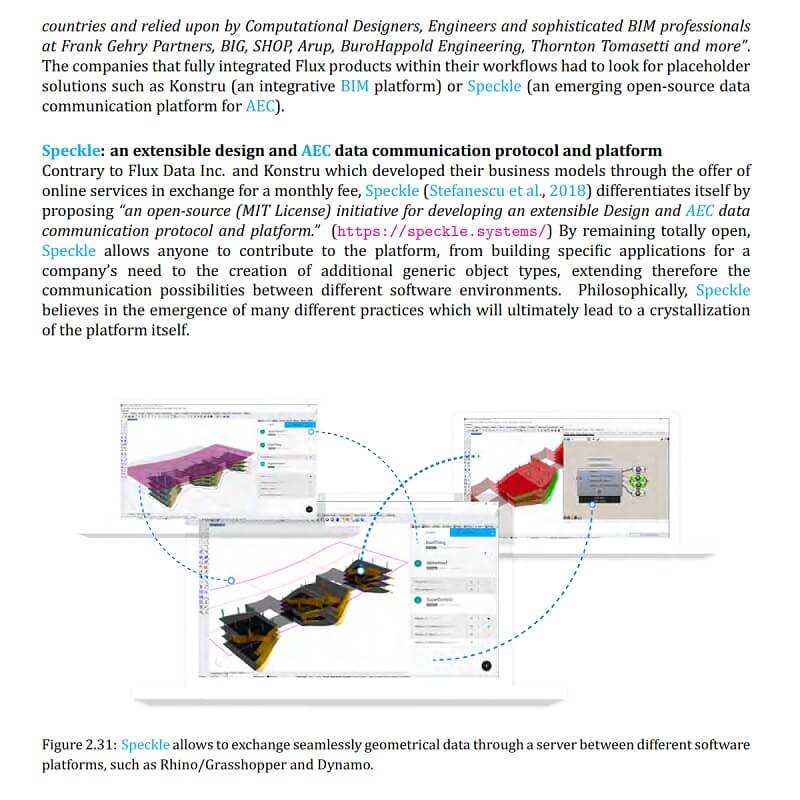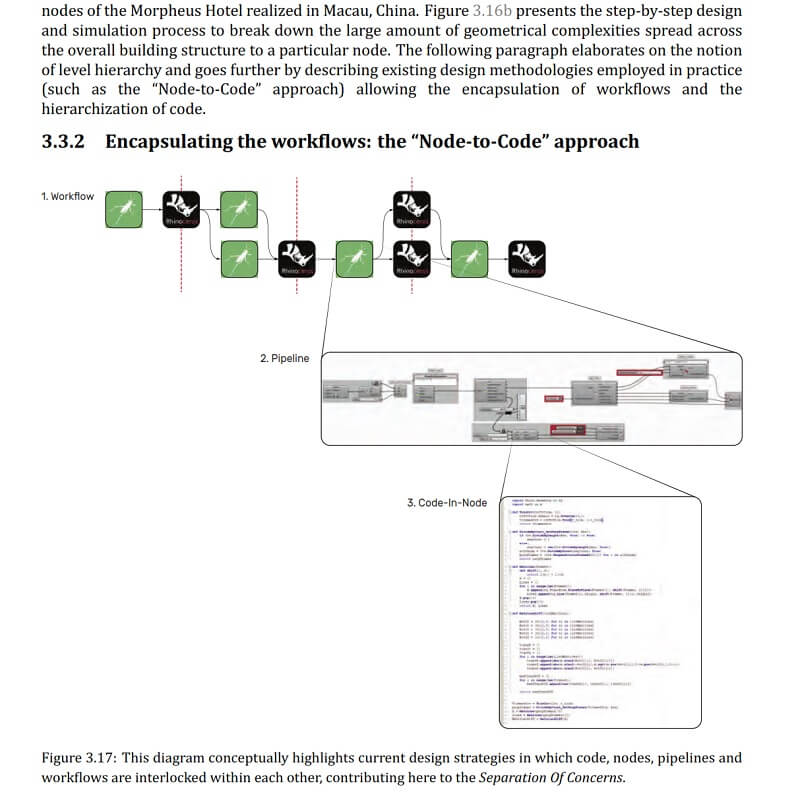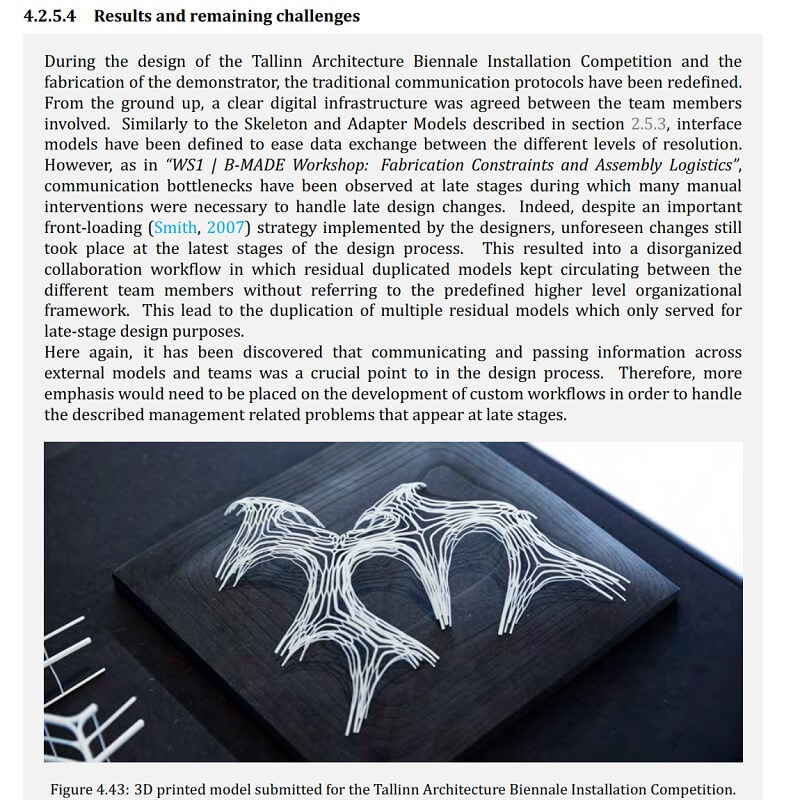Collaborative Architecture
Enhancing Collaborative Practices in Architecture, Engineering and Construction
through MultiScalar Modelling Methodologies
Paul Poinet
A thesis presented for the degree of Doctor of Philosophy
The Royal Danish Academy of Fine Arts Schools of Architecture, Design and Conservation

This thesis by Paul Poinet is an attempt to enhance collaborative practices in architecture, engineering and construction through Multi‑Scalar Modelling Methodologies. The thesis examines the interdisciplinary concept of Multi‑Scalar Modelling through the scope of the AEC domain’s requirements to improve the existing design workflows in industry.

Where present modelling paradigms consolidate the ambition to interface different design environments through a uniϐied model, such as Building Information Modelling (BIM), the ambition of the thesis is to articulate how Multi‑Scalar Modelling can support the creation of a network of models tuned to interface and communicate information across the design chain.

The present thesis takes as a starting point the Multi‑Scalar Modelling framework formulated and established by CITA through the conception, production and realization of precedent design probes, prototypes and demonstrators (e.g. The Rise, Dermoid, Lace Wall and Stressed Skins). Those demonstrators introduced Multi‑Scalar Modelling strategies enabling a direct communication between multiple scales, from material specifications at high resolution to the global design environment.

The thesis attempts to extend this theoretical framework by adapting it to the building scale through further inclusion of industry concerns and problematics, provided here by both BuroHappold and Design‑to‑Production: trying to keep a consistent, continuous design workϐlow throughout the whole design process, from early design to late stages.


































Comments